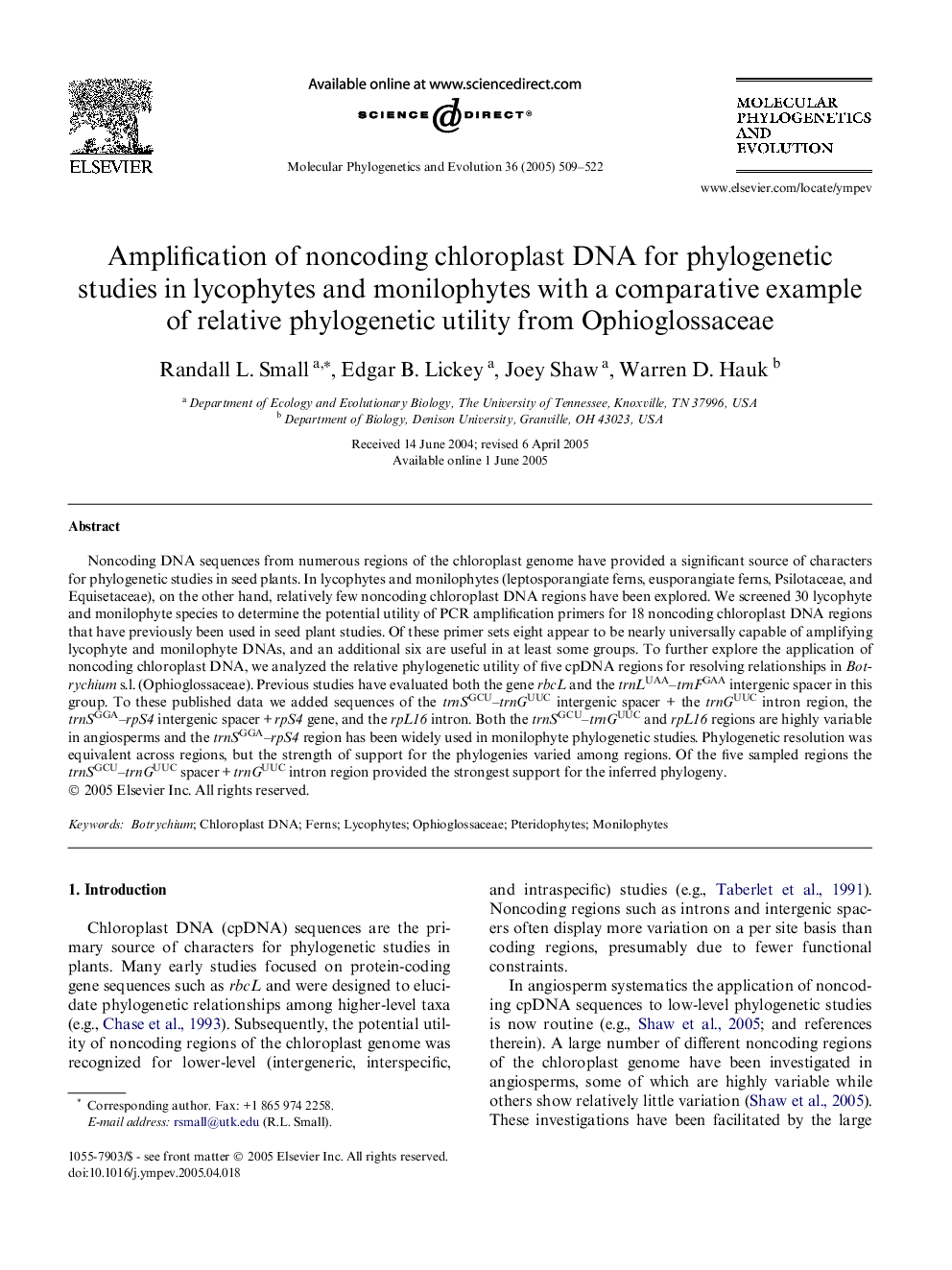| کد مقاله | کد نشریه | سال انتشار | مقاله انگلیسی | نسخه تمام متن |
|---|---|---|---|---|
| 9143049 | 1164374 | 2005 | 14 صفحه PDF | دانلود رایگان |
عنوان انگلیسی مقاله ISI
Amplification of noncoding chloroplast DNA for phylogenetic studies in lycophytes and monilophytes with a comparative example of relative phylogenetic utility from Ophioglossaceae
دانلود مقاله + سفارش ترجمه
دانلود مقاله ISI انگلیسی
رایگان برای ایرانیان
موضوعات مرتبط
علوم زیستی و بیوفناوری
علوم کشاورزی و بیولوژیک
بوم شناسی، تکامل، رفتار و سامانه شناسی
پیش نمایش صفحه اول مقاله

چکیده انگلیسی
Noncoding DNA sequences from numerous regions of the chloroplast genome have provided a significant source of characters for phylogenetic studies in seed plants. In lycophytes and monilophytes (leptosporangiate ferns, eusporangiate ferns, Psilotaceae, and Equisetaceae), on the other hand, relatively few noncoding chloroplast DNA regions have been explored. We screened 30 lycophyte and monilophyte species to determine the potential utility of PCR amplification primers for 18 noncoding chloroplast DNA regions that have previously been used in seed plant studies. Of these primer sets eight appear to be nearly universally capable of amplifying lycophyte and monilophyte DNAs, and an additional six are useful in at least some groups. To further explore the application of noncoding chloroplast DNA, we analyzed the relative phylogenetic utility of five cpDNA regions for resolving relationships in Botrychium s.l. (Ophioglossaceae). Previous studies have evaluated both the gene rbcL and the trnLUAA-trnFGAA intergenic spacer in this group. To these published data we added sequences of the trnSGCU-trnGUUC intergenic spacer + the trnGUUC intron region, the trnSGGA-rpS4 intergenic spacer + rpS4 gene, and the rpL16 intron. Both the trnSGCU-trnGUUC and rpL16 regions are highly variable in angiosperms and the trnSGGA-rpS4 region has been widely used in monilophyte phylogenetic studies. Phylogenetic resolution was equivalent across regions, but the strength of support for the phylogenies varied among regions. Of the five sampled regions the trnSGCU-trnGUUC spacer + trnGUUC intron region provided the strongest support for the inferred phylogeny.
ناشر
Database: Elsevier - ScienceDirect (ساینس دایرکت)
Journal: Molecular Phylogenetics and Evolution - Volume 36, Issue 3, September 2005, Pages 509-522
Journal: Molecular Phylogenetics and Evolution - Volume 36, Issue 3, September 2005, Pages 509-522
نویسندگان
Randall L. Small, Edgar B. Lickey, Joey Shaw, Warren D. Hauk,